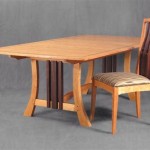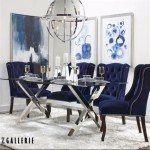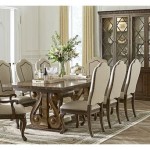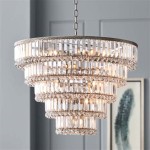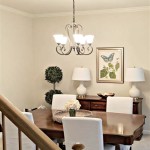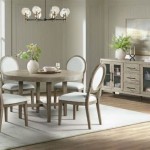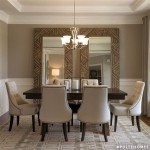Dining Room Paint Colors with Chair Rail: A Guide to Harmonious Design
The dining room serves as a central hub for family gatherings, celebrations, and everyday meals. As such, its aesthetic appeal plays a crucial role in shaping the overall atmosphere. Incorporating a chair rail offers an opportunity to add architectural interest and visual separation to the walls. Selecting the right paint colors, in conjunction with the presence of a chair rail, requires careful consideration of several factors, including room size, lighting conditions, and desired ambiance. This article explores various approaches to choosing paint colors for dining rooms with chair rails, providing insights into creating a balanced and visually pleasing space.
Understanding the Role of Chair Rail
A chair rail, historically designed to protect walls from chair backs, has evolved into a decorative element that can significantly impact the visual perception of a room. Its horizontal line divides the wall into two distinct sections, allowing for the use of different paint colors or textures to create contrast and visual interest. The height of the chair rail is typically between 30 and 36 inches from the floor, although this can vary depending on the room's ceiling height and overall proportions. Understanding the existing architectural style of the room, including the chair rail's style (e.g., simple, ornate, or modern), is crucial in selecting complementary paint colors.
The chair rail itself can be painted in a variety of ways. It can be painted the same color as the trim (baseboards, door frames, and window casings) to create a cohesive look and visually ground the room. Alternatively, it can be painted a contrasting color to highlight its presence and add definition to the wall. The material of the chair rail also influences paint color selection. For instance, a natural wood chair rail might pair well with earthy or warm-toned paint colors, while a painted chair rail offers greater flexibility in color choices.
Color Strategies for Dining Rooms with Chair Rail
Several color strategies can be employed to create a visually appealing dining room with a chair rail. These strategies often depend on the desired aesthetic and the existing features of the room, such as natural light and furniture style.
Monochromatic Schemes: A monochromatic color scheme involves using different shades, tints, and tones of a single color. This approach creates a sense of harmony and sophistication. For a dining room, one could choose a deep shade of gray below the chair rail and a lighter shade of gray above. The chair rail itself could be painted a crisp white to provide a clean separation. This creates a subtle yet elegant effect, suitable for both formal and informal dining settings.
Complementary Color Schemes: Complementary colors are those that sit opposite each other on the color wheel, such as blue and orange, or red and green. Using complementary colors can create a bold and dynamic look. However, it is important to use them carefully to avoid overwhelming the space. For instance, one might choose a muted shade of blue below the chair rail and a complementary shade of orange in artwork or accessories. A neutral color, such as beige or cream, can be used above the chair rail to balance the bolder colors below. The chair rail itself can be painted white or a darker shade of the blue to provide contrast.
Analogous Color Schemes: Analogous colors are those that sit next to each other on the color wheel, such as blue, blue-green, and green. This creates a harmonious and relaxing feel. For a dining room, one might choose a deep blue-green below the chair rail and a lighter shade of green above. The chair rail could be painted a slightly darker shade of the blue-green to provide a subtle contrast. This scheme is particularly well-suited for creating a calming and inviting dining space.
Neutral Color Schemes: Neutral colors such as white, beige, gray, and greige (a blend of gray and beige) provide a versatile backdrop for any dining room. These colors can be used in various combinations to create different effects. For instance, one could choose a warm beige below the chair rail and a crisp white above. The chair rail could be painted the same white as the upper portion of the wall or a slightly darker shade of beige for a subtle contrast. This approach is timeless and works well with a variety of furniture styles and accessories.
Dark Below, Light Above: Painting the area below the chair rail a darker color and the area above a lighter color is a common technique that visually grounds the room and makes it feel more spacious. This approach works particularly well in rooms with high ceilings. For example, a deep navy below the chair rail paired with a soft off-white above creates a sophisticated and elegant look. The chair rail itself could be painted white or a lighter shade of the navy to provide contrast.
Light Below, Dark Above: Painting the area below the chair rail a lighter color and the area above a darker color is generally less common but can create a dramatic and intimate atmosphere. This approach works best in rooms with ample natural light. For example, a soft cream below the chair rail paired with a deep charcoal gray above can create a striking contrast. The chair rail could be painted the same cream as the lower portion of the wall to create a cohesive look.
Factors Influencing Color Choice
Several factors influence the selection of paint colors for a dining room with a chair rail. Careful consideration of these factors is essential for achieving the desired aesthetic and ensuring a harmonious and visually pleasing space.
Room Size and Shape: The size and shape of the dining room play a significant role in determining the most suitable paint colors. In smaller dining rooms, lighter colors are generally preferred as they reflect light and create a sense of spaciousness. Darker colors can make a small room feel even smaller and more enclosed. In larger dining rooms, darker colors can be used more effectively to create a sense of intimacy and warmth. The shape of the room also matters. A long, narrow dining room might benefit from using lighter colors on the long walls to visually widen the space and darker colors on the shorter walls to balance the proportions.
Lighting Conditions: The amount of natural and artificial light in the dining room significantly impacts how paint colors appear. Natural light tends to enhance the vibrancy of colors, while artificial light can alter their appearance. It is important to test paint colors in the room under different lighting conditions before making a final decision. For example, a color that looks beautiful in natural daylight might appear dull or washed out under artificial lighting. Rooms with limited natural light might benefit from using lighter, more reflective paint colors to maximize the available light. Rooms with abundant natural light can handle darker colors more effectively without feeling too dark or enclosed.
Furniture and Decor: The existing furniture and decor in the dining room should also be considered when selecting paint colors. The paint colors should complement the furniture style, upholstery, and accessories. For example, a dining room with traditional furniture might benefit from using classic, muted color schemes, while a dining room with modern furniture might benefit from using bolder, more contemporary colors. The color of the dining table and chairs is particularly important. If the furniture is made of dark wood, lighter paint colors can provide a pleasing contrast. If the furniture is light-colored, darker paint colors can help to anchor the space.
Desired Ambiance: The desired ambiance of the dining room is a crucial factor in selecting paint colors. Different colors evoke different emotions and create different atmospheres. Warm colors, such as red, orange, and yellow, are associated with energy, excitement, and appetite. Cool colors, such as blue, green, and purple, are associated with calmness, relaxation, and serenity. Neutral colors provide a versatile backdrop that can be adapted to different styles and moods. For example, a dining room designed for formal entertaining might benefit from using elegant and sophisticated colors, such as deep grays, blues, or greens. A dining room designed for casual family meals might benefit from using warm and inviting colors, such as yellows, oranges, or reds.
Personal Preference: Ultimately, the choice of paint colors for a dining room with a chair rail is a matter of personal preference. The homeowner should select colors that they find aesthetically pleasing and that create the desired atmosphere in the space. While it is important to consider the factors mentioned above, the final decision should be based on the homeowner's individual taste and style. It is always a good idea to test paint samples on the walls before committing to a specific color. This allows you to see how the color looks in the room under different lighting conditions and with your existing furniture and decor. Don't be afraid to experiment with different color combinations and find what works best for you.
Preparing the Walls and Painting Techniques
Proper preparation of the walls is essential for achieving a professional-looking paint job. Before painting, the walls should be cleaned to remove any dirt, dust, or grease. Any holes or cracks should be filled with spackle or joint compound and sanded smooth. The chair rail should also be cleaned and sanded if necessary. If the walls are glossy or have been painted with a dark color, they should be primed before painting to ensure proper adhesion and coverage.
When painting a dining room with a chair rail, it is important to use proper painting techniques. Start by taping off the chair rail with painter's tape to create a clean line. Apply the paint in thin, even coats, using a high-quality brush or roller. Allow each coat of paint to dry completely before applying the next coat. For best results, apply two coats of paint. Once the paint is dry, carefully remove the painter's tape to reveal a crisp, clean line. Consider using a paint sprayer for a smooth and even finish, particularly for the chair rail itself.

How To Update Paint A Room With Chair Rail Dado Kylie M Interiors

How To Update Paint A Room With Chair Rail Dado Kylie M Interiors

How To Make The Most Of Your Chair Rail Delightfully

Home State Scrap Wood Art Make It Love Grey Dining Room Chair Rail Colors

The 3 Best Paint Choices For Walls With Chair Rails

Slate Blue In And Out Of Chair Rail With White Trim Filtered Lighting Full Length C Dining Room Colors Paint Elegant

How To Update Paint A Room With Chair Rail Dado Kylie M Interiors

Chair Rails In The Dining Room 9 Great Ideas Renocompare

7 Farmhouse Dining Room With Chair Rail Ideas 2024 Today S Homeowner

Elevate Your Decor With These 68 Creative Chair Rail Ideas Dining Room Paint Living

